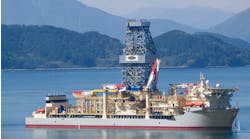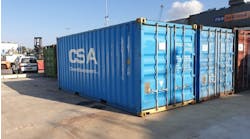Upstream technology integration: Opportunities, obstacles, success
Kaiwan Bharucha, Senior Energy Consultant
Dutch Holland, Holland & Davis LLC
With offshore E&P spending projected to approach one-quarter trillion dollars annually by 2010 (up more than $50 billion from 2006), cost-effective operations that simultaneously drive profitability have become more important than ever.
Within this capital expenditure-charged environment is a critical component that, despite its value, often “slips between the cracks” in operational management. It is upstream technology integration, or the failure thereof. By effectively integrating new technology into different parts of a company’s upstream business, countless opportunities emerge that on a virtually straight-line basis lead to profitable growth.
Yet these opportunities frequently are lost because most integration projects either struggle or outright fail to deliver on promises or expectations. Addressing the issue of successful technology integration at organizations of any size depends largely on how each deals with change management, business readiness, the changing industry workforce, and getting clear top-down commitment from upper management. An examination of successes, failures, and best practices illustrates how most offshore companies, using essentially the people and resources they already have, can over-achieve.
Opportunities for excellence
An understanding of how to make technology a growth engine begins anecdotally with a major’s experience. Management realized that in best designing a new well, they should absorb lessons from previous wells. That entailed either retrieving paper files or trying to extract information from different databases or Excel files. Both presented problems.
Management concluded they needed to integrate the drilling engineering design applications with the daily operations database, automatically enabling access to data, which provided a better understanding of drilling wells. Integration not only reduced the time required to find information but also reduced costs and provided better data quality and enhancing safety through quicker answers to risk issues.
Of equal importance is how knowledge transfer is also improved through technology integration amidst an aging workforce and manpower attrition. When wells are designed on Excel spreadsheets using laptops, data often does not remain with the company when employees depart because the information is outdated or does not reside on the server. However, by mandating that all data must be stored on a central database, the valuable information is regularly updated and never leaves the company’s electronic storage. Therefore, a new engineer can easily retrieve and instantly see the well as designed by his predecessor. Simple, right?
Obstacles to success
Yet, despite these forward-looking opportunities, most integration projects still metaphorically drive off cliffs with demoralizing regularity. In deciding to create a system that integrated the operational data application with the engineering design application, Holland & Davis turned to major oilfield service companies for the software. Their application development process took approximately four to five years but they anticipated excellent results, figuring that office-based drilling and completions engineers would readily welcome having data immediately available.
At worst, management expected minimal resistance from field operations personnel who might lobby for application modifications. Unfortunately, their perceptions could not have been more wrong; most resistance came from engineers now having to use new and different database applications. Their objections were not complicated; nobody had gotten them involved initially to ask questions, get opinions, or help them understand the transition.
Another key resistance factor was not technical. Many engineers were comfortable working in the same way their entire careers. As a result, although a common database was a major plus in management’s view, to these engineers pushing retirement, keeping acquired knowledge as close to the vest as possible was more important than sharing it (knowledge transfer).
Top-down strategy
Technology implementation begins with selecting the correct implementation strategy: adoption or deployment. Strategy selection is determined by upper management:
- Have they decided to “deploy” new technology that all units will use (not optional) by a set date?
- Or have they decided to “allow adoption” by various units involved (units may choose when or if they will use the new technology)?
This upper management decision is frequently unclear or ambiguous. Therefore, when necessary, the technology advocate must seek clarity and proceed accordingly.
Much confusion typically exists around this deployment-adoption issue, breeding abundant false assumptions and expectations. This article illustrates key differences between the two implementation strategies. Note that in the deployment situation (if properly handled), all units can be at 100% use at a required time target (if that target gives reasonable time for preparation). Also note that in the adoption situation (each unit gets to decide when and/or if), the time to mature use of the technology is almost always a multi-year affair, ending with, at best, an approximate 80% utilization rate.
With most technology implementations, the first several days are most critical in setting the tone and getting the project on track. As to whether adoption or deployment is chosen depends on the company and its set-up. At one E&P company, the central drilling organization has more decision making power than the individual business units. In such a case, either deployment or adoption can be used. Whereas, in the same company production decisions are made at business unit level with no central team having implementation power. In that case, the technology advocate essentially depends on different business units to adopt the new technology… unless top management chooses to get involved and mandate deployment across units. So, the choice is more situation-based, depending on an organization’s structure and management’s intentions.
Lack of expertise
Selecting the right project management team is the Achilles’ heel for many companies. Many IT personnel selected typically are young, with little or no petroleum engineering experience. That contrasts with engineers having extensive field experience but limited IT knowledge. Thus, a team often is built with both sides headed in the wrong direction. A successful integration project team must have at least one individual from each of the required domains of expertise: upstream business unit(s), IT and rollout (i.e., change engineering), including someone with high level expertise who understands the link between field operations and technology.
Companies often underestimate the degree of “domain” expertise needed to make an integration project successful. The relationship between level of expertise and effectiveness of support is illustrated. The curve represents the “Rule of 10” (i.e., it takes at least 10 years of hard study and experience to master any field). The message is clear: upstream integration is an extremely difficult and complex process, and the implementation must be staffed with experts to have a chance of success.
Communicate, communicate, communicate
Although this communication recommendation may suggest a generally fundamental exchange of information, an effective process in this context contains considerably more specifics. For openers, communicate about the business problem, the opportunity offered by integrated technology, and negative outcomes that might occur with inaction. In other words, do not assume that any target audience knows what the communicator knows. Otherwise, with everyone equally well-versed, few projects would ever experience failure.
Also, in terms of potential problems and negative outcomes, communicate personal concerns, concerns of others, and where to locate further information. And make the “business case” even stronger by bringing in valued and credible outsiders to clearly (and in appropriate detail) explain the benefits they have experienced by using the integrated technology. The foremost idea for a technology deployment is continually communicating the vision of success on the basis that, even for veterans of previous implementations, key points about rationale and payout should be driven home. Along with buy-in, let everyone know that the project is proceeding on a specific path and, to reach the intended destination, what each individual must do to reach the deployment target data.
The foremost idea for a technology adoption usually is enabling continuing information flow about the success of early adopters of integrated technology. In an adoption, where each business unit is free to make its own decision, continuous communication from the technology advocate usually appears to be a “sales job” (or sales pressure), which is inevitably a turnoff to potential adopters. In an adoption, at best, the technology advocate facilitates good communication between the units and lets the benefits of technology integration speak for themselves.
Believability from the outside in
In what can seem paradoxical, particularly at large organizations with countless highly specialized experts, using outside domain experts is helpful. Outsiders are perceived as more believable if for no other reason than they apparently have no political agenda. Many technology integration projects do not owe their internal failure to lack of technical expertise or organizational support but rather to the fact that those needing to be convinced just did not believe the company’s people.
Realistically, the success of technology integration centers on a critical mass of appropriate communication for both deployment and adoption. Whoever is doing the communication must address the time and energy required to get communications in sync. Making any less investment is virtually guaranteed to irrevocably turn the project in the wrong direction. Upstream technology brings abundant opportunities to the table, but obstacles as well. Strong implementation management, a clear strategy, available expertise, and good communication with emphasis on business readiness can accomplish more than successful project completion; it can lead directly to consistently profitable growth.
About the authors
Kaiwan Bharucha is an experienced management consultant, with an 11-year background in domestic and international oil and gas upstream operations, marketing, and management consulting. Bharucha holds a BS in mechanical engineering, MS in petroleum engineering, and is currently pursuing an MBA from University of Texas at Austin. Prior to joining HDI he worked for two major oil and gas service companies and has authored technical articles for various oil and gas publications.
Dutch Holland, PhD, is chairman and founder of Houston-based Holland & Davis LLC, a management consulting firm. Holland has worked with the oil and gas industry for more than three decades, developing and implementing wide-ranging tools and concepts for managing change within companies. He has led many strategic change management initiatives, been an advisor on industrial innovation to the President and taught executive programs at prestigious universities. Holland holds a doctorate from the University of Texas at Austin.







